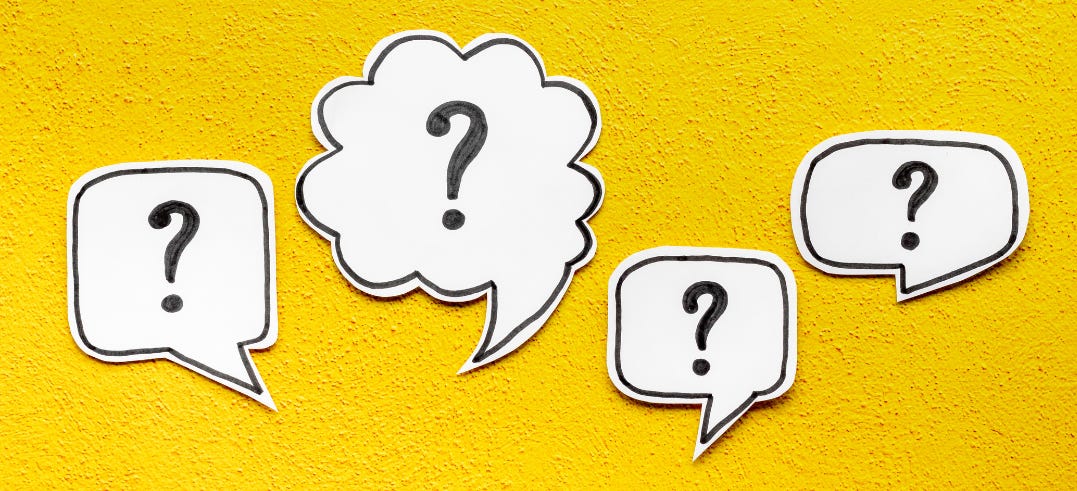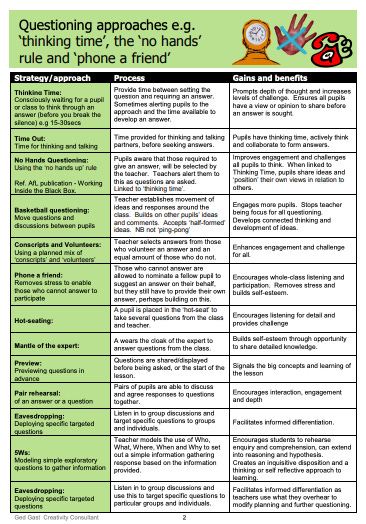Ask the Right Questions to Maximize Learning
Effective questioning strategies in online learning experiences.
Asking the right questions in any learning experience can help learners better understand the material and apply the learning to their own practices. In online learning spaces, we face the challenge of keeping our learners on track and engaged from a distance, so effective questioning becomes even more important.
Here are 5 tips for asking effective questions in the learning experiences you design (geared for adult learners but also applicable for younger learners). Below the tips, you will find a helpful handout with 22 specific questioning strategies.
5 Tips for Asking Effective Questions (with examples)
1. Ask for Clarification
Asking clarifying questions can help learners better understand the material and make the most of the experience. This type of questioning involves asking for clarification on a concept or getting more details on a topic. This is really effective when a concept is process-oriented. For example, the micro-course, Meeting the Needs of English Learners, shares a set of predictable stages students move through as they learn a second language. Then, it presents a list of the same stages described a bit differently, asking learners to order them. This question clarifies the stages and allows learners to check their understanding of the process described.
2. Strive for Critical Thinking
Ask questions that require higher-order thinking. Higher-order thinking questions challenge learners to go beyond describing or simply memorizing facts and instead think deeply about the concept. These types of questions can help learners solve problems and think more critically.
3. Sprinkle in Open-Ended Questions
Open-ended questions encourage learners to think critically and explore new ideas. These types of questions help learners draw their own conclusions. For example, the micro-course: When Practice Makes Perfect Isn't Enough challenges learners to consider what their assessments are really assessing and whether they are leading to the intended results. The following question is posed: “Consider the practice opportunities you plan for your students. How do these assignments provide opportunities to put knowledge into your students' memories and help them retain and take out what they've already learned?” This open-ended question requires learners to provide explanations about their own assessments.
4. Promote Divergent Thinking
Not all questions have right or wrong answers. Ask questions that can be answered in multiple ways. These types of questions allow learners to express multiple, unique ideas. This promotes the consideration of the question in the context of the learner’s own teaching practices.
5. Present a Call to Action
Ask questions that promote action steps from your learners. Questions that encourage the application of knowledge or skills are just as important as ones that check for understanding. In the course, Building Student Resilience Through Positive Connections, an action-based question is presented after an inspirational video about building strong relationships with students. The question is, “Which specific connection-building strategy can you commit to in the next two weeks, and how will you use the strategy?”
A Helpful Handout
Check out this helpful handout, Effective Questioning and Classroom Talk. It gives 22 different questioning strategies. While some are geared toward the face-to-face classroom, most can be adopted in online spaces as well.
Effective questioning strategies ensure that minutes are not wasted on questions that are misaligned with our instructional goals. Remember, each minute of learning and each question you ask matters!
More about JoltEDU
The examples in the 5 tips above are from micro-courses offered by JoltEDU: Microlearning for Today’s Busy Educators. For information about how to bring microlearning to teachers in your school, contact Chris Davis (chris@joltedu.com)




